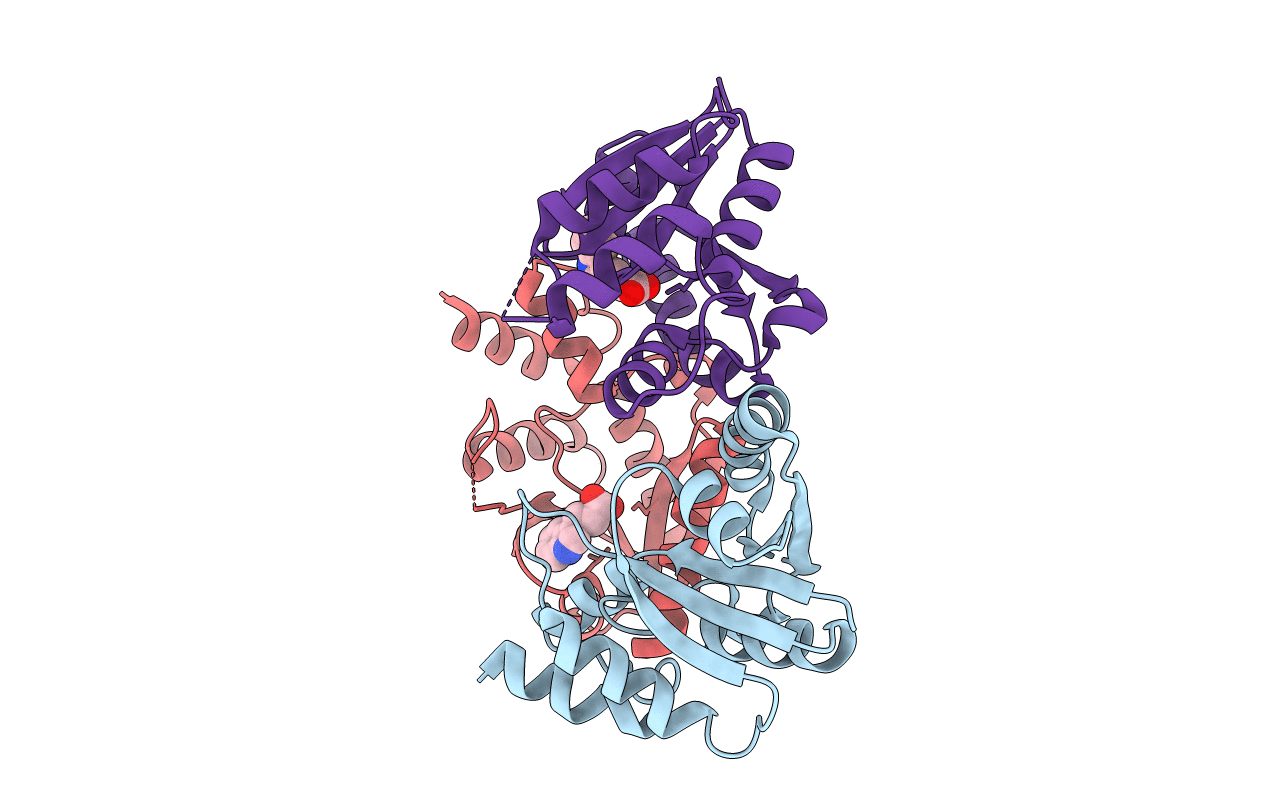
Deposition Date
2017-05-16
Release Date
2017-06-28
Last Version Date
2024-01-17
Entry Detail
PDB ID:
5O0F
Keywords:
Title:
Crystal structure of Phosphopantetheine adenylyltransferase from Mycobacterium abcessus in complex with 3-(indol-3-yl)propanoic acid (Fragment 5)
Biological Source:
Source Organism:
Mycobacterium abscessus ATCC 19977 (Taxon ID: 561007)
Host Organism:
Method Details:
Experimental Method:
Resolution:
1.70 Å
R-Value Free:
0.23
R-Value Work:
0.20
R-Value Observed:
0.20
Space Group:
C 2 2 21


